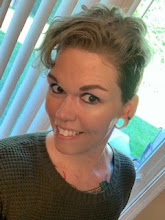Adrienne Jankens and myself (Amy Metcalf) - both of Wayne State University - are using one blogspace to introduce to you our plans for a 30-minute MAKE (with little bit of talk) presentation at this year's WIDE-EMU. Here's a little bit of background and some plans for the session. We hope you'll join us in generating (what we hope will be) an awesome knowledge-sharing half hour!
From Adrienne:
My experience using Donna Ogle’s KWL strategy began with
teaching literature to high school sophomores. The premise of this pre-reading
strategy is to tap into students’ prior knowledge before reading, so they can
make connections with the text more easily, and focus their attention on
finding answers within the text. The KWL strategy highlights what students
know, want to know, and have learned about a topic, and, when written down,
articulates this knowledge in a way that holds more water than in class discussion
that dissolves into the air when the bell rings. One day, in an improvisational
move in an intro college writing class where students were having trouble
coming up with specific topics for a researched argument essay, I wrote three
questions on the board:
·
What do I know about this topic?
·
What do I want to know about this topic?
·
What have I learned through my research?
One student offered up her topic (I think it was something
broad like “animal rights”) and the class generated their prior knowledge and
questions while I served as recording secretary, my blue marker chasing ideas
all around the board. The discussion highlighted, for this student, what her
interests were regarding the topic, and what some potential narrowed lines of
inquiry might be for the project. The class’s compilation of prior knowledge
and potential questions paved the way for a more confident start for this
student as she began her project.
For my WIDE-EMU presentation, I’d like to “talk” my way
through the following questions, exploring this idea of using the KWL to access
prior knowledge about college writing and to promote students’ confidence in
this knowledge in beginning the class as a whole and in beginning writing
projects specifically:
·
What do I KNOW about why accessing prior
knowledge is valuable?
·
[What do I WANT to know?] How does the KWL
actually work as a class activity to activate this prior knowledge?
·
What have I LEARNED (through an anecdotal
example from this semester) about how this activity promotes confidence in
students and helps me teach writing?
From Amy:
Promoting student self-efficacy and motivation in
the classroom is a must for the composition classroom, especially basic and
first-year writing. In this “Make”
presentation, I will give a brief description of an assignment that I developed
using the website Pinterest. In short, at the beginning of the semester I ask students
to consider various questions that promote introspection about their identity
as students and their goals and intentions within higher education. While this
practice is by no means new or innovative,
I have found that incorporating the use of image collections enhances
student engagement and this is evidenced in a reflection assignment coupled
with the Pinterest activity.
While I am still engaged in research to determine
if this practice remains impactful longitudinally, I offer anecdotal and
preliminary data to suggest that students who are given several opportunities
of self-expression early in a semester prove to maintain and increase
confidence in their writing and their acquisition and transfer of new knowledge
from the composition classroom to simultaneous outside contexts. The Pinterest activity as I have designed it
also doubles for the practice of summarizing as students are asked to create
captions of a limited number of characters as well as a written synopsis of
their entire presentation of images. I will ask attendees to either share their
own practices or to think of what they might create/develop/implement in their
own classrooms to promote student self-efficacy.
